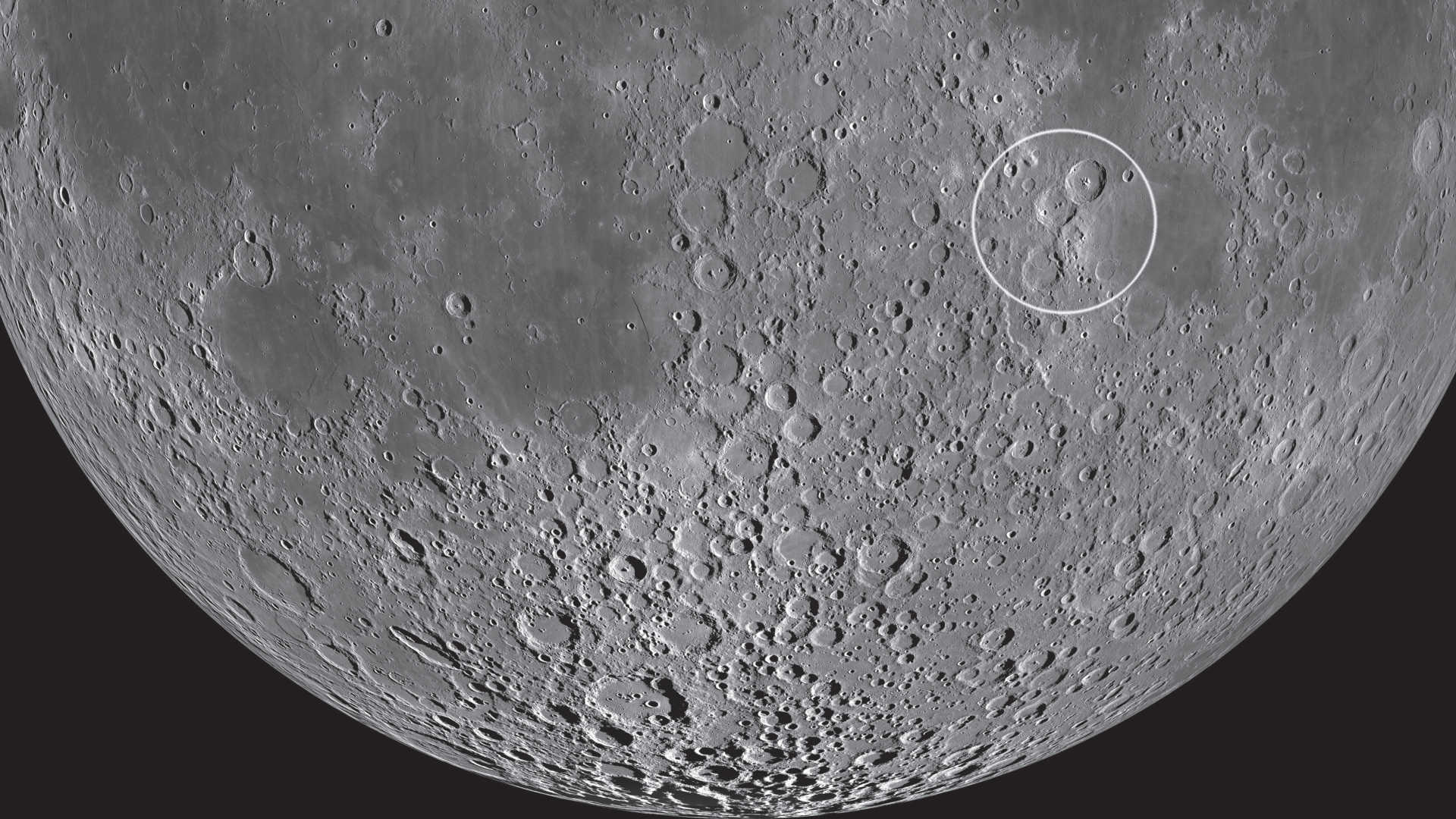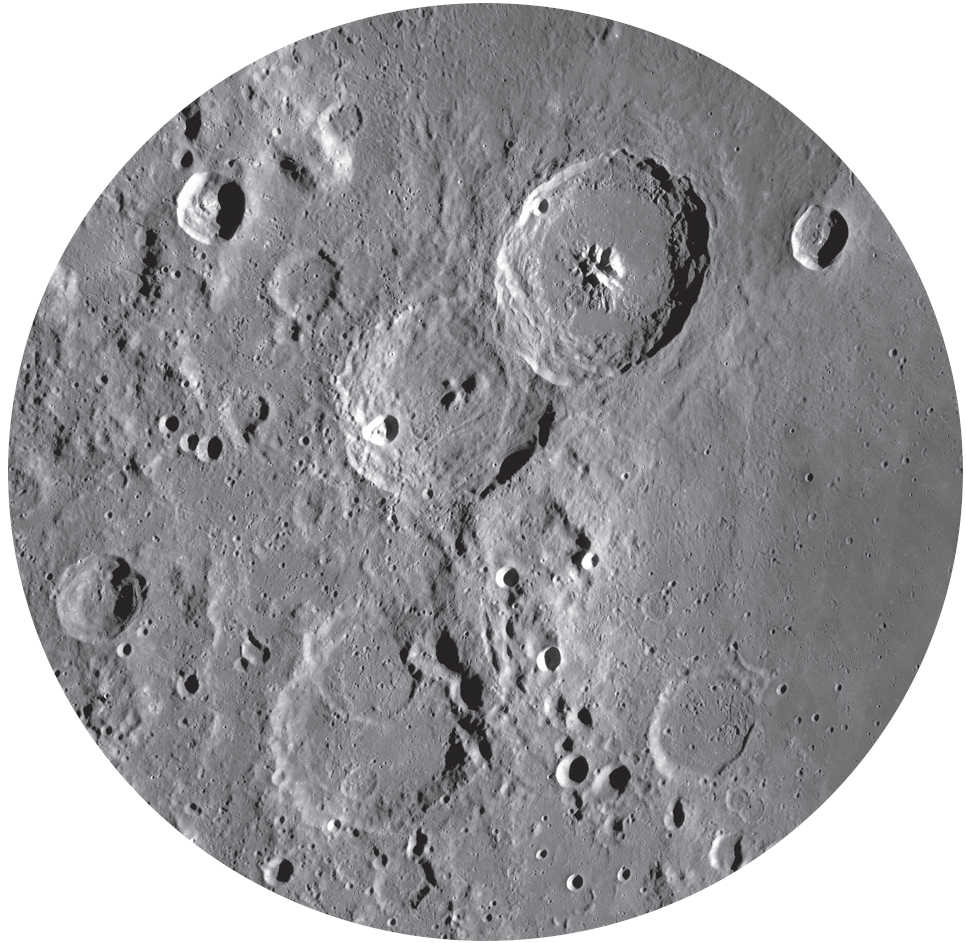Grandiose trio
The crater trio Theophilus, Cyrillus and Catharina form a grandiose group, many details of which are visable even through a small telescope.
 The trio Theophilus, Cyrillus and Catharina is located directly on the western edge of Mare Nectaris. NASA/GSFC/Arizona State University
The trio Theophilus, Cyrillus and Catharina is located directly on the western edge of Mare Nectaris. NASA/GSFC/Arizona State UniversityFive days after New Moon, the waxing Moon reveals one of the big highlights for lunar observers: the crater trio Theophilus, Cyrillus and Catharina. The impact craters form a grandiose threesome, curving slightly to trace the course of Mare Nectaris (Sea of Nectar).
Older and younger craters
The similarly-sized craters Theophilus (119 km), Cyrillus (98 km) and Catharina (104 km) offer a whole night of observation material within in a small area. It is best to start observing with low magnification, so that the craters can first be seen in their surroundings. In this way, the order in which they originated can be clearly identified. Theophilus, the most northerly, is the best preserved. It partially overlaps Cyrillus to the south. This means that Theophilus must have been created after Cyrillus.
Cyrillus and Catharina are more heavily eroded; Catharina significantly more so than Cyrillus, which suggests that Catharina is the older of the two.
Craters with many details
 This remarkable threesome reveals many details, even in a small telescope. NASA/GSFC/Arizona State University
This remarkable threesome reveals many details, even in a small telescope. NASA/GSFC/Arizona State UniversityTheophilus’ wall is clearly defined and is heavily terraced on the inner side. Inside the crater, the 1,400 m high central peak is striking and, if the seeing is good, can be seen to be divided into four individual segments - even through a telescope with a small aperture. Another observing target for smaller telescopes is the 8 km wide crater Theophilus B, which was formed just on the north-western crater wall. Cyrillus to the south has, like Theophilus, central mountains. They are arranged in three sections, the largest of which has a somewhat domed appearance. Unlike Theophilus, Cyrillus’ crater wall is more noticeably flat and, in some sections, flows smoothly into the rough floor.
However, the most heavily eroded crater is Catharina. The wall of the flat bowl is punctuated by many further impacts. To the north, Catharina is almost half-covered by the 46-km crater Catharina P. On the eastern crater wall, Catharina B (24 km) and G (17 km) lie close together, and Catharina S (16 km) is located on the southern wall. There is no central peak; this was probably destroyed during the formation of Catharina P.
Best visibility 5 or 18 days after New Moon
Author: Lambert Spix / Licence: Oculum-Verlag GmbH
